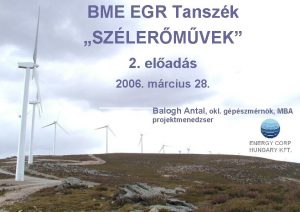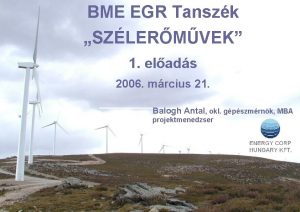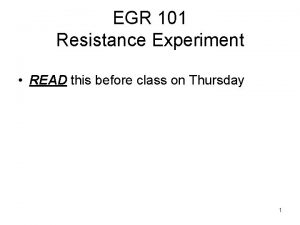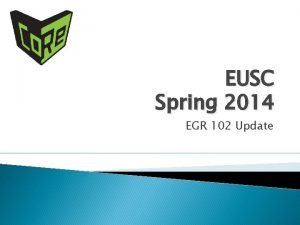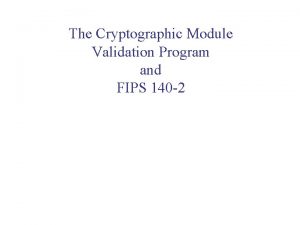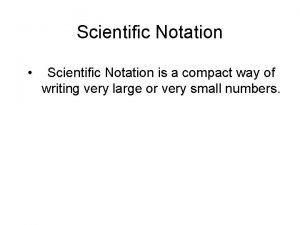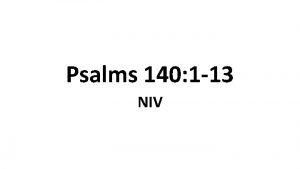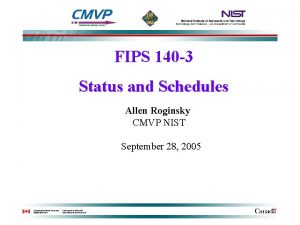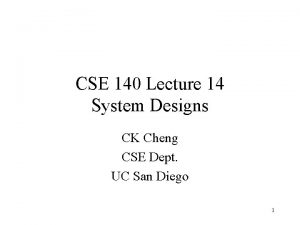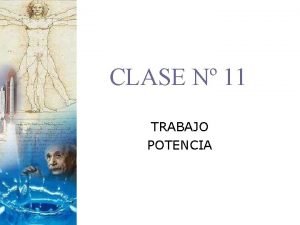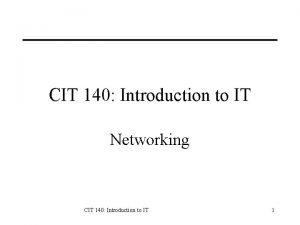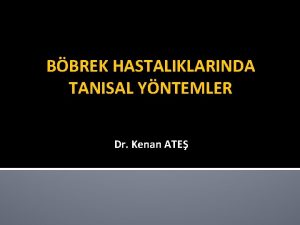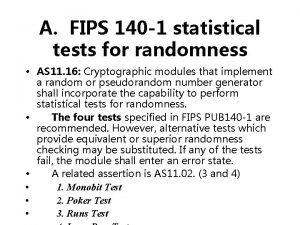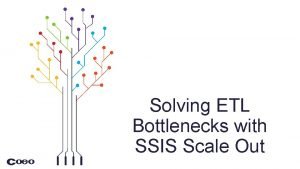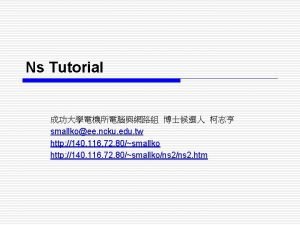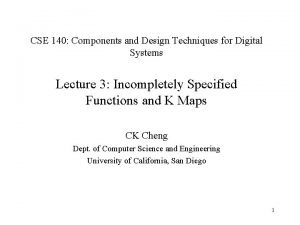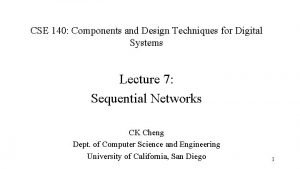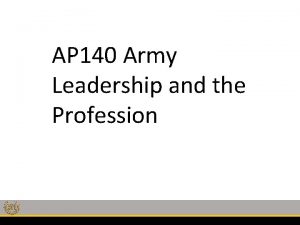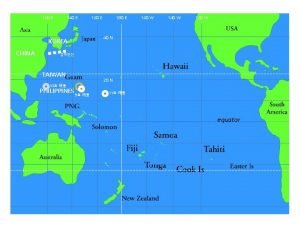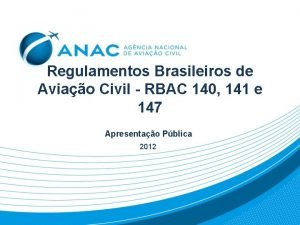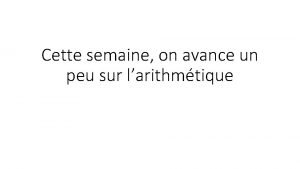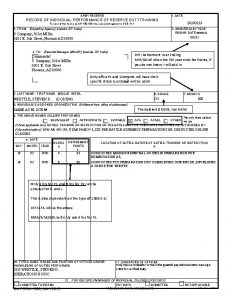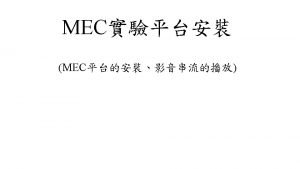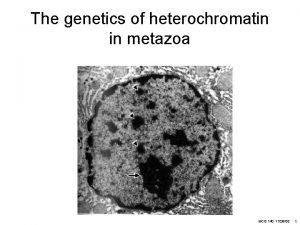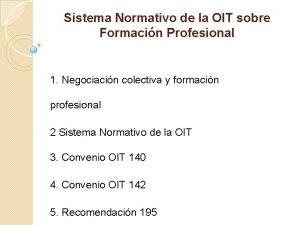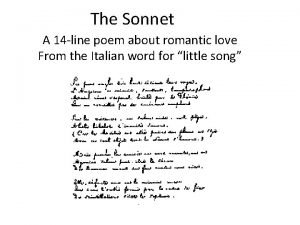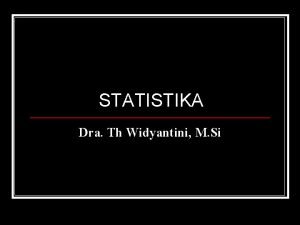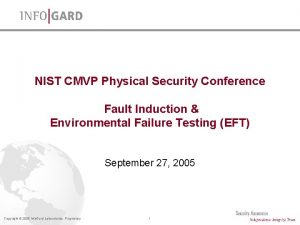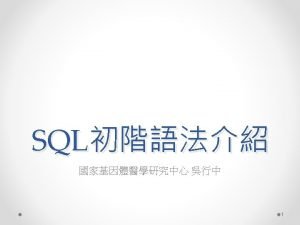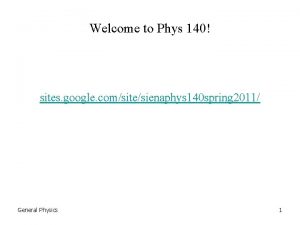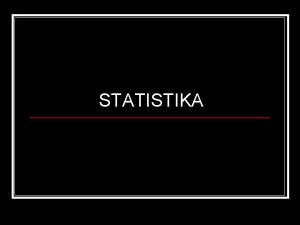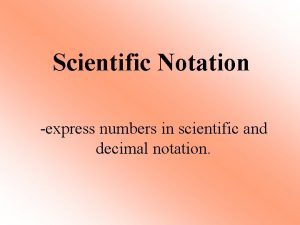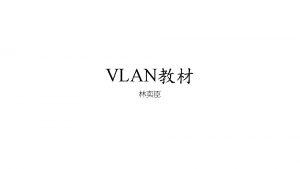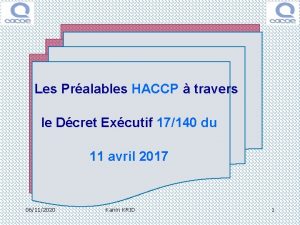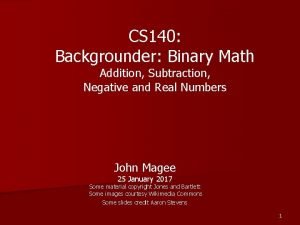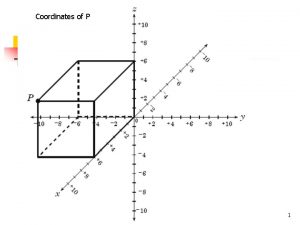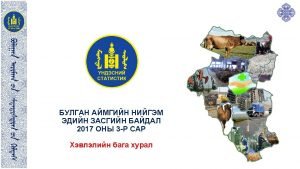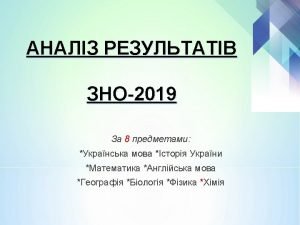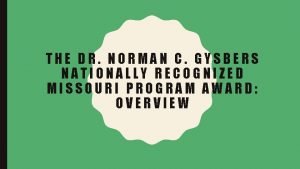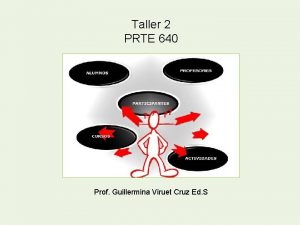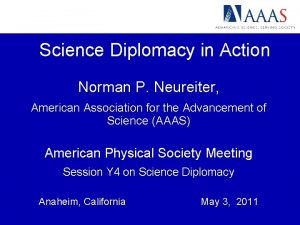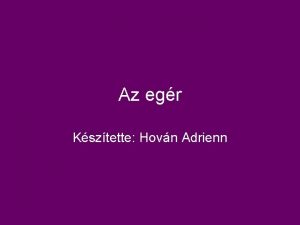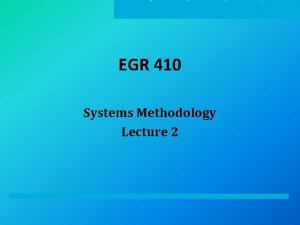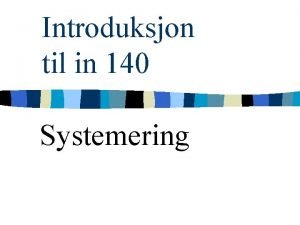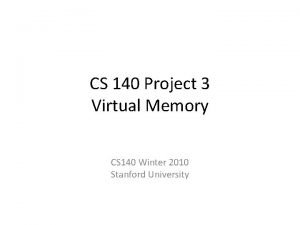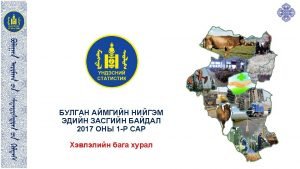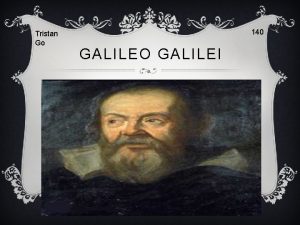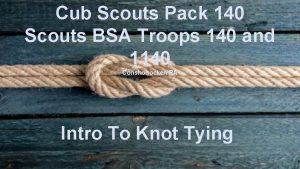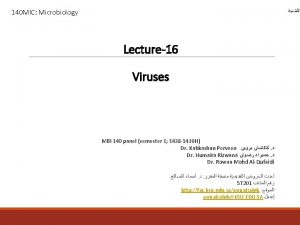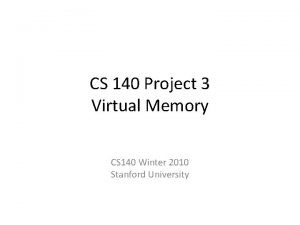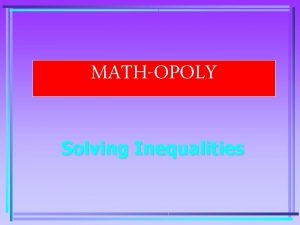Dr Norman Dr Norman EGR 140 CHAPTER 6
































































- Slides: 64

Dr. Norman

Dr. Norman EGR 140 CHAPTER 6 STRUCTURAL ANALYSIS

Chapter 6 Structural Analysis 6. 1 Simple Trusses 6. 2 The Method of Joints 6. 3 Zero Force Members 6. 4 The Method of Sections 6. 5 Space Trusses 6. 6 Frames and Machines Dr. Norman

SIMPLE TRUSSES, THE METHOD OF JOINTS, & ZERO-FORCE MEMBERS Today’s Objectives: a) Define a simple truss. b) Determine the forces in members of a simple truss. c) Identify zero-force members. Dr. Norman

APPLICATIONS Trusses are commonly used to support roofs. For a given truss geometry and load, how can you determine the forces in the truss members and thus be able to select their sizes? A more challenging question is that for a given load, how can we design the trusses’ geometry to minimize cost? Dr. Norman

APPLICATIONS Trusses are also used in a variety of structures like cranes and the frames of aircraft or space stations. How can you design a light weight structure that will meet load, safety, cost specifications, be easy to manufacture, and allow easy inspectioin over its lifetime? Dr. Norman

SIMPLE TRUSSES (Section 6. 1) A truss is a structure composed of slender members joined together at their end points. If a truss, along with the imposed load, lies in a single plane (as shown at the top right), then it is called a planar truss. Dr. Norman

SIMPLE TRUSSES (Section 6. 1) • A simple truss is a planar truss • Begins with a triangular element • Can be expanded by adding two members and a joint • The number of members (M) and the number of joints (J) are related by M = 2 J Dr. Norman – 3

ANALYSIS & DESIGN ASSUMPTIONS When designing both the member and the joints of a truss • It is necessary to determine the forces in each truss member. • This is called the force analysis of a truss. Dr. Norman

ANALYSIS & DESIGN ASSUMPTIONS During a force analysis of a truss, two assumptions are made: 1. All loads are applied at the joints. • The weight of the truss members is neglected • The weight is small as compared to the forces supported by the members. 2. The members are joined together by smooth pins. • This assumption is satisfied in cases where the joints are formed by bolting the ends together. Dr. Norman

ANALYSIS & DESIGN ASSUMPTIONS • With these two assumptions, the members act as two-force members. • They are loaded in either tension or compression. • Often compressive members are made thicker to prevent buckling. Dr. Norman

THINK ABOUT IT… One of the assumptions used when analyzing a simple truss is that the members are joined together by _____. A) Welding D) Smooth pins B) Bolting E) Super glue D Dr. Norman C) Riveting

THE METHOD OF JOINTS (Section 6. 2) When using the method of joints to solve for the forces in truss members • The equilibrium of a joint (pin) is considered • All forces acting at the joint are shown in a FBD. Dr. Norman • Equations of equilibrium are used to solve for the unknown forces acting at the joints.

STEPS FOR ANALYSIS 1. If the truss’s support reactions are not given, draw a FBD of the entire truss and determine the support reactions (typically using scalar equations of equilibrium). 2. Draw the free-body diagram of a joint with one or two unknowns. Assume that all unknown member forces act in tension (pulling the pin) unless you can determine by inspection that the forces are compression loads. Dr. Norman

STEPS FOR ANALYSIS 3. Apply the scalar equations of equilibrium, FX = 0 and FY = 0, to determine the unknown(s). If the answer is positive, then the assumed direction (tension) is correct, otherwise it is in the opposite direction (compression). 4. Repeat steps 2 and 3 at each joint in succession until all the required forces are determined. Dr. Norman

THINK ABOUT IT… When using the method of joints, typically _____ equations of equilibrium are applied at every joint. A) Two B) Three C) Four D) Six A Dr. Norman

ZERO-FORCE MEMBERS (Section 6. 3) If a joint has only two non-collinear members and there is no external load or support reaction at that joint • Then those two members are zeroforce members. Here: DE, DC, AF, and AB are zero force members. You can easily prove these results by applying the equations of equilibrium to joints D and A. Dr. Norman

ZERO-FORCE MEMBERS (Section 6. 3) Zero-force members can be removed (as shown in the figure) when analyzing the truss. Dr. Norman

ZERO – FORCE MEMBERS (continued) If three members form a truss joint for which two of the members are collinear and there is no external load or reaction at that joint, then the third non-collinear member is a zero force member. Dr. Norman

ZERO – FORCE MEMBERS (continued) Again, one can also remove the zero-force member, as shown, on the left, for analyzing the truss further. Note: zero-force members increase stability and rigidity of the truss, and to provide support for different loading conditions. Dr. Norman

EXAMPLE Given: Loads as shown on the truss Find: The forces in each member of the truss. Plan: 1. Check if there any zero-force members. 2. First analyze pin D and then pin A 3. Note that member BD is zero-force member. FBD = 0 Dr. Norman

EXAMPLE (continued) D 450 lb 45 º FAD 45 º FCD FBD of pin D + FX = – 450 + FCD cos 45° – FAD cos 45° = 0 + FY = – FCD sin 45° – FAD sin 45° = 0 FCD = 318 lb (Tension) or (T) FAD = – 318 lb (Compression) or (C) Dr. Norman

EXAMPLE (continued) Analyzing pin A: FAD 45 º A AY FAB FBD of pin A + FX = FAB + (– 318) cos 45° = 0; FAB = 225 lb (T) Could you have analyzed Joint C instead of A? Dr. Norman

EXAMPLE (continued) Analyzing pin C: FCD 45 º FCB CY FBD of pin C + FX = FCB + (– 318) cos 45° = 0; FCB = 225 lb (T) Dr. Norman C

THINK ABOUT IT… Truss ABC is changed by decreasing its height from H to 0. 9 H. Width W and load P are kept the same. Which is true for the revised truss as compared to the original truss? P A) Force in all its members have remained the same. A B) Force in all its members have increased. C) Force in all its members have decreased. H C B D) None of the above. B Dr. Norman W

THINK ABOUT IT… F For this truss, determine the number of zero-force members. A) 0 B) 1 D) 3 E) 4 Dr. Norman C) 2 D

GROUP PROBLEM SOLVING Given: Loads as shown on the truss Find: Determine the force in all the truss members (do not forget to mention whether they are in T or C). Plan: a) Check if there any zero-force members. b) Draw FBDs of pins D and E, and apply EE to solve for the unknowns. c) Member CE is zero-force member so FEC = 0. Dr. Norman

GROUP PROBLEM SOLVING (continued) Y 600 N D X From geometry, tan-1(1/2)=26. 57 FDE 26. 57 Analyzing pin D: → + FX = 600 – FCD sin 26. 57 = 0 FCD = 1341 N = 1. 34 k. N (C) + FY = 1341 cos 26. 57 – FDE = 0 (Note that FCD = FBC!) Volunteer FDE = 1200 N = 1. 2 k. N (T) Dr. Norman FCD

GROUP PROBLEM SOLVING (continued) Y FDE 900 N E X 45 Analyzing pin E: FEA → + FX = 900 – FEB sin 45 = 0 FEB = 1273 N = 1. 27 k. N (C) + FY = 1200 + 1273 cos 45 – FEA = 0 Volunteer Dr. Norman FEA = 2100 N = 2. 1 k. N (T) FEB

THINK ABOUT IT… FBC Using this FBD, you find that FBC = – 500 N. Member BC must be in _____. B FBD A) Tension BY B) Compression C) Cannot be determined B Dr. Norman

THE METHOD OF SECTIONS Today’s Objectives: 1. To Determine forces in truss members using the method of sections. Dr. Norman

APPLICATIONS Long trusses are often used to construct large cranes and large electrical transmission towers. The method of joints requires that many joints be analyzed before we can determine the forces in the middle part of a large truss. So we need another method to determine such forces. Dr. Norman

THE METHOD OF SECTIONS In the method of sections, a truss is divided into two parts by taking an imaginary “cut” (shown here as a-a) through the truss. Dr. Norman

THE METHOD OF SECTIONS Since truss members are subjected to only T or C forces along their length, the internal forces at the cut members will be either T or C with the same magnitude. This is based on the equilibrium principle and Newton’s third law. Dr. Norman

THINK ABOUT IT… 1. In the method of sections, generally a “cut” passes through no more than _____ members in which the forces are unknown. A) 1 B) 2 C) 3 D) 4 C Dr. Norman

THINK ABOUT IT… If a simple truss member carries a tensile force of T along its length, then the internal force in the member is ______. A) Tensile with magnitude of T/2 B) Compressive with magnitude of T/2 C) Compressive with magnitude of T D) Tensile with magnitude of T D Dr. Norman

STEPS FOR ANALYSIS 1. Decide how you need to “cut” the truss. This is based on: a) Where you need to determine forces b) Where the total number of unknowns does not exceed three (in general). Dr. Norman

STEPS FOR ANALYSIS 2. Decide which side of the cut truss will be easier to work with (minimize the number of reactions you have to find). 3. If required, determine any necessary support reactions by drawing the FBD of the entire truss and applying the E-of-E. Dr. Norman

STEPS FOR ANALYSIS (continued) 4. Draw the FBD of the selected part of the cut truss. • Indicate the unknown forces at the cut members • Initially assume all the members are in tension • Dr. Norman If the answer is positive, the member is in tension, if the answer is negative, the member must be in compression

STEPS FOR ANALYSIS (continued) 5. Apply the scalar equations of equilibrium (E-of-E) to the selected cut section of the truss to solve for the unknown member forces. Note: In most cases it is possible to write one equation to solve for one unknown directly. Dr. Norman

EXAMPLE Given: Loads as shown on the truss. Find: The force in members KJ, KD, and CD. Plan: a) Take a cut through the members KJ, KD, and CD. b) Work with the left part of the cut section. c) Determine the support reactions at A. Dr. Norman d) Apply the E of E to find the forces in KJ, KD, and CD.

EXAMPLE (continued) Ay ∑MG = AY (18) – 20 (15) – 30 (12) – 40 (9) = 0; AY = 45. 6 k. N + MD = – 45. 6 (9) + 20 (6) + 30 (3) – FKJ (4) = 0 FKJ = − 50. 1 k. N or 50. 1 k. N ( C ) Dr. Norman

EXAMPLE (continued) ↑ + FY = 45. 6 – 20 – 30 – (4/5) FKD = 0; FKD = − 5. 5 k. N , or 5. 5 k. N (C) → + FX = (– 50. 1) + (3/5) ( – 5. 5 ) + FCD = 0; Dr. Norman FCD = 53. 4 k. N (T)

THINK ABOUT IT … Can you determine the force in member ED by making the cut at section a-a? Explain your answer. A) No, there are 4 unknowns. B) Yes, using MD = 0. C) Yes, using ME = 0. D) Yes, using MB = 0. Dr. Norman D

THINK ABOUT IT … If you know FED, how will you determine FEB ? By taking … A) Section b-b & using ME = 0 B) Section b-b, using FX = 0 & FY = 0 C) By taking section a-a & using MB = 0 D) By taking section a-a & using MD = 0 B Dr. Norman

GROUP PROBLEM SOLVING Given: The internal drag truss for a airplane wing is subjected to the forces shown. Find: The force in members IH, BH, and BC. Plan: Dr. Norman a) Take a cut through the members IH, BH, and BC. b) Analyze the right section (no support reactions!). c) Draw the FBD of the right section. d) Apply the equations of equilibrium

SOLUTION Let’s Draw the FBD + ↑ FY = 80 + 60 + 40 – FBH sin 45º = 0; FBH = 255 lb (T) + MH = – FBC (2) + 60 (2) + 40 (3. 5)Needed! = 0; FBC = 130 lb (T) Volunteer’s + → FX = FIH – 130– 255 cos 45º = 0; FIH = 310 lb (T) Dr. Norman

THINK ABOUT IT… A cut is made through members GH, BG and BC to determine the forces in them. Which section will you choose for analysis and why? A) Right, fewer calculations. B) Left, fewer calculations. C) Either right or left, same amount of work. D) None of the above, too many unknowns. Dr. Norman A

FRAMES AND MACHINES Today’s Objectives: a) Draw the free body diagram of a frame or machine and its members. b) Determine the forces acting at the joints and supports of a frame or machine. Dr. Norman

APPLICATIONS Frames are commonly used to support various external loads. How is a frame different than a truss? To be able to design a frame, you need to determine the forces at the joints and supports. Dr. Norman

APPLICATIONS (continued) “Machines, ” like those above, are used in a variety of applications. How are they different from trusses and frames? How can you determine the loads at the joints and supports? These forces and moments are required when designing the machine members. Dr. Norman

FRAMES AND MACHINES: DEFINITIONS Frame Machine Frames and machines are two common types of structures that have at least one multi-force member. (Recall that trusses have nothing but two-force members). Dr. Norman

FRAMES AND MACHINES: DEFINITIONS Frame Machine Frames are generally stationary and support external loads. Machines contain moving parts and are designed to alter the effect of forces. Dr. Norman

THINK ABOUT IT… Frames and machines are different as compared to trusses since they have ______. A) Only two-force members B) Only multiforce members C) At least one multiforce member D) At least one two-force member C Dr. Norman

THINK ABOUT IT … Forces common to any two contacting members act with _______ on the other member. A) Equal magnitudes but opposite sense B) Equal magnitudes and the same sense C) Different magnitudes but opposite sense D) Different magnitudes but the same sense Dr. Norman A

STEPS FOR ANALYZING A FRAME OR MACHINE 1. Draw a FBD of the frame or machine and its members, as necessary. Hints: a) Identify any two-force members FAB Dr. Norman b) Forces on contacting surfaces (usually between a pin and a member) are equal and opposite c) For a joint with more than two members or an external force, it is advisable to draw a FBD of the pin.

STEPS FOR ANALYZING A FRAME OR MACHINE FAB 2. Develop a strategy to apply the equations of equilibrium to solve for the unknowns. Dr. Norman

EXAMPLE Given: The frame supports an external load and moments shown. Find: The horizontal and vertical components of the pin reactions at C and themagnitude of reaction at B. Plan: Dr. Norman a) Draw FBDs of the frame member BC. b) Apply the equations of equilibrium and solve for the unknowns at C and B.

EXAMPLE 800 N m 1 m 1 m B 45° FAB 400 N CX CY 2 m FBD of member BC Note that member AB is a two-force member. Equations of Equilibrium: + MC = FAB sin 45° (1) – FAB cos 45° (3) + 800 N m + 400 (2) = 0 Dr. Norman FAB = 1131 N

EXAMPLE 400 N 800 N m 1 m B 1 m 45° FAB 2 m FBD of member BC Now use the x and y direction Equations of Equilibrium: + FX = – CX + 1131 sin 45° = 0; CX = 800 N + FY = – CY + 1131 cos 45° – 400 = 0 Dr. Norman CY = 400 N CX CY

GROUP PROBLEM SOLVING Given: A frame supports a 50 -kg cylinder. Find: The reactions that the pins exert on the frame at A and D. Plan: a) Draw a FBD of member ABC and another one for CD. b) Apply the equations of equilibrium to each FBD to solve for the six unknowns. Think about a strategy to easily solve for Dr. Norman the unknowns.

GROUP PROBLEM SOLVING (continued) FBDs of members ABC and CD Applying E-of-E to member ABC: + MA = CY (1. 6) – 50 (9. 81) (0. 7) – 50 (9. 81) (1. 7) = 0; CY = 735. 8 N + FY = AY – 735. 8 – 50 (9. 81) = 0 ; AY = 245 N + FX = C X – AX = 0 ; C X = A X Dr. Norman

GROUP PROBLEM SOLVING (continued) FBDs of members ABC and CD CY 50(9. 81) N 0. 7 m 1. 2 m 1. 6 m DX Applying E-of-E to member CD: CX DY + MD = CX (1. 2) + 50 (9. 81) (0. 7) – 735. 8(1. 6) = 0 ; CX = 695 N + FY = DY – 735. 8 + 50 (9. 81) = 0 ; DY = 245 N + FX = DX – 695 = 0 ; DX = 695 N Dr. Norman AX = CX = 695 N

Use this time to work on homework problems and to ask any questions! Dr. Norman
 Two technicians are discussing clogged egr passages
Two technicians are discussing clogged egr passages Bme egr
Bme egr Bme egr
Bme egr Egr 101
Egr 101 Egr 102
Egr 102 Yüzde 30'u 90 olan sayı kaçtır
Yüzde 30'u 90 olan sayı kaçtır Iq levels
Iq levels Fips 140 seals
Fips 140 seals Cerium-140
Cerium-140 140 000 000 in scientific notation
140 000 000 in scientific notation Psalm 23 niv
Psalm 23 niv Pergub 140 tahun 2011
Pergub 140 tahun 2011 Podaj długości promieni kół o obwodach
Podaj długości promieni kół o obwodach Kap 140
Kap 140 Passengers can help a driver manage emotions by
Passengers can help a driver manage emotions by Fips pub 140-3
Fips pub 140-3 Cse 140
Cse 140 Cse 140
Cse 140 What does 5'2 140 lbs look like
What does 5'2 140 lbs look like Ejercicios de trabajo y potencia
Ejercicios de trabajo y potencia Cit 140
Cit 140 Mcb 140
Mcb 140 Biegemoment streckenlast
Biegemoment streckenlast Ckd-epi formülü
Ckd-epi formülü Fips 140 1
Fips 140 1 Ssis scale
Ssis scale Http://140
Http://140 5 ilcs 140/7
5 ilcs 140/7 Cse 140
Cse 140 Ff t
Ff t Army ethical lenses
Army ethical lenses 40 n 140 e
40 n 140 e Rbac 141
Rbac 141 Astm e 140
Astm e 140 Decomposer en produit de facteur premier
Decomposer en produit de facteur premier Da 1380 example
Da 1380 example From 12 to 140 ghz
From 12 to 140 ghz Corresponding angles flow proof given m 5=40
Corresponding angles flow proof given m 5=40 Ip 140
Ip 140 Verizon coop
Verizon coop Mcb 140
Mcb 140 Convenio 142 oit
Convenio 142 oit Sentiment analysis
Sentiment analysis 14 line poem
14 line poem 1400000/120
1400000/120 Tinggi badan cm turus frekuensi
Tinggi badan cm turus frekuensi Fips 140-3 pdf
Fips 140-3 pdf Kap 140 autopilot
Kap 140 autopilot Http://140
Http://140 Phys 140
Phys 140 Diagram batang mendatar
Diagram batang mendatar 27x10^3 in scientific notation
27x10^3 in scientific notation 140-117
140-117 Divisores 80
Divisores 80 Décret exécutif n° 17-140 du 11 avril 2017
Décret exécutif n° 17-140 du 11 avril 2017 140 in binary
140 in binary To find the height of a pole a surveyor moves 140
To find the height of a pole a surveyor moves 140 X = 140 120 100
X = 140 120 100 100+80+40
100+80+40 100+120+140+160+180
100+120+140+160+180 Abowd and beale model
Abowd and beale model Norman gysbers
Norman gysbers Taxonomia bloom anderson
Taxonomia bloom anderson Norman webb taxonomy
Norman webb taxonomy Norman neureiter
Norman neureiter

